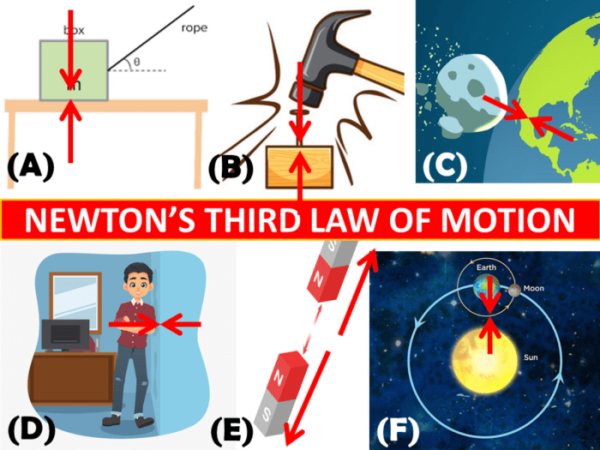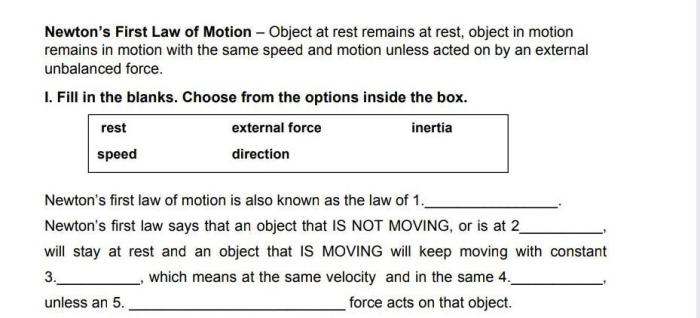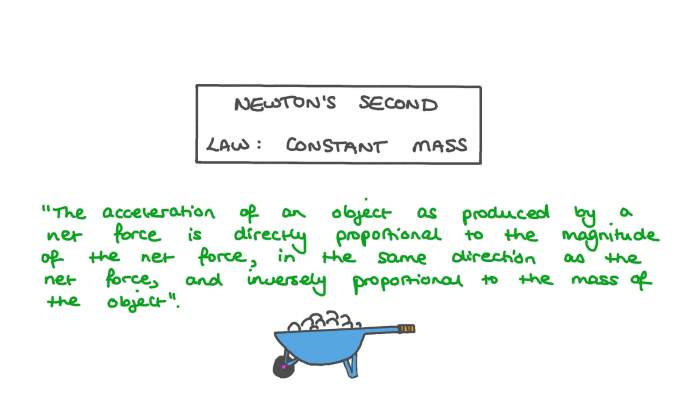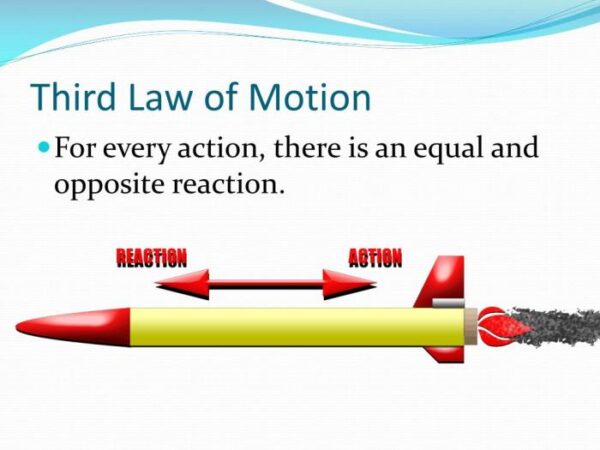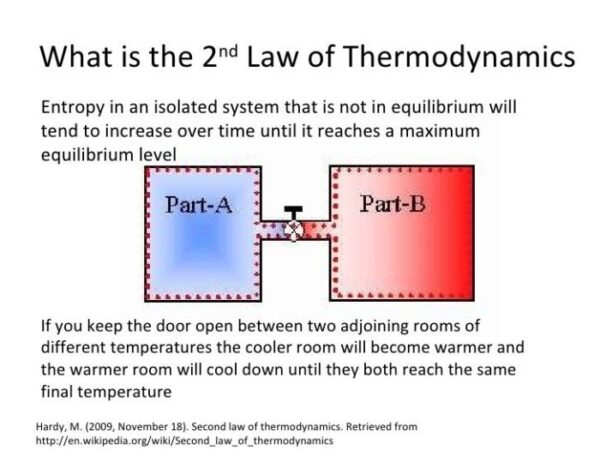
What’s Newton’s First Law of Motion? It’s a fundamental concept in physics that explains why objects at rest tend to stay at rest, and objects in motion tend to stay in motion at a constant velocity unless acted upon by an external force. This law, also known as the law of inertia, is a cornerstone of classical mechanics and helps us understand the behavior of objects in our everyday world.
The concept of inertia is crucial to understanding Newton’s First Law. Inertia is the tendency of an object to resist changes in its motion. The more massive an object is, the more inertia it possesses, meaning it takes more force to get it moving or to stop it once it’s in motion. Imagine riding in a car that suddenly stops; your body continues to move forward due to inertia. This is a classic example of Newton’s First Law in action.
Introduction to Newton’s First Law
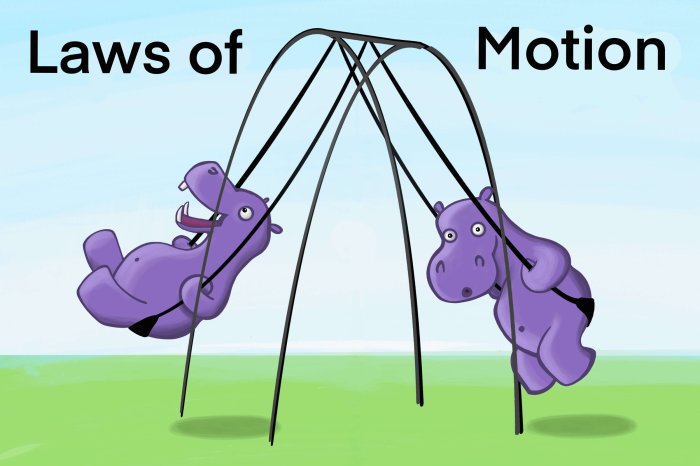
Newton’s First Law of Motion, often referred to as the Law of Inertia, is a fundamental principle in physics that describes the behavior of objects in the absence of external forces. It lays the groundwork for understanding how objects move and interact within the universe.
This law, first articulated by Sir Isaac Newton in his groundbreaking work “Philosophiæ Naturalis Principia Mathematica” in 1687, revolutionized our understanding of motion and paved the way for modern physics.
Definition of Newton’s First Law
Newton’s First Law states that an object at rest will remain at rest, and an object in motion will continue in motion with the same speed and in the same direction unless acted upon by an unbalanced force. In essence, this law establishes that objects have an inherent tendency to resist changes in their state of motion.
The Importance of Inertia
Inertia is the key concept behind Newton’s First Law. It is the property of an object that resists changes in its motion. The more massive an object is, the greater its inertia.
- A stationary object will remain stationary unless a force acts upon it. For example, a book lying on a table will stay put until someone picks it up or pushes it.
- An object in motion will continue moving at a constant velocity unless acted upon by a force. For instance, a car traveling at a constant speed on a straight road will continue at that speed and direction until the driver applies the brakes or steers the wheel.
Inertia is a fundamental property of matter and plays a crucial role in understanding the motion of objects in the universe. It explains why objects resist changes in their motion and why forces are necessary to initiate or alter motion.
Key Concepts of Inertia
Inertia is a fundamental concept in physics that describes an object’s resistance to changes in its motion. It is a property of matter that is directly related to an object’s mass. The more massive an object is, the greater its inertia, meaning it requires more force to accelerate or decelerate.
Inertia and Mass
The relationship between inertia and mass is fundamental to understanding how objects behave under the influence of forces.
Inertia is directly proportional to mass.
This means that an object with a larger mass will have greater inertia, making it more difficult to change its motion. For example, a bowling ball, which has a large mass, will be much harder to get moving than a tennis ball, which has a much smaller mass.
Inertia of Objects at Rest
Objects at rest tend to stay at rest due to their inertia. This means that a stationary object will remain stationary unless acted upon by an unbalanced force. For instance, a book lying on a table will not move unless someone pushes or pulls it.
Inertia of Objects in Motion
Objects in motion tend to stay in motion at a constant velocity in a straight line due to their inertia. This means that an object moving at a constant speed will continue moving at that speed in the same direction unless acted upon by an unbalanced force. For example, a car moving at a constant speed on a straight road will continue moving at that speed in the same direction unless the driver applies the brakes or steers the car.
Examples of Inertia in Everyday Life
Inertia is a fundamental concept that is readily observed in everyday life. Here are some examples:
- Riding in a car that suddenly stops: When a car suddenly stops, the passengers continue to move forward due to their inertia. This is why it is important to wear seatbelts, which help to restrain the passengers and prevent them from being thrown forward.
- Riding in a car that suddenly starts: When a car suddenly starts, the passengers are thrown backward due to their inertia. This is because their bodies are initially at rest, and they resist the sudden change in motion.
- A ball rolling on a smooth surface: A ball rolling on a smooth surface will continue to roll in a straight line at a constant speed unless acted upon by an unbalanced force. This is because the ball has inertia, and it resists changes in its motion.
The Law of Inertia in Action

Inertia, the tendency of an object to resist changes in its motion, is a fundamental concept in physics. This resistance to change in motion is directly related to the object’s mass. The greater the mass, the greater the inertia, meaning it requires a larger force to change its motion.
The Relationship Between Force and Inertia
Newton’s First Law states that an object at rest will stay at rest, and an object in motion will stay in motion at a constant velocity, unless acted upon by an unbalanced force. This means that to overcome inertia and change an object’s motion, a force must be applied. The magnitude of the force required is directly proportional to the object’s inertia, which is directly proportional to its mass.
A larger force is needed to change the motion of a more massive object, and a smaller force is needed to change the motion of a less massive object.
For example, it takes more force to push a loaded truck than to push a bicycle. This is because the truck has a greater mass and therefore more inertia.
Examples of Inertia in Action
The concept of inertia is evident in numerous everyday situations.
- A passenger in a car suddenly braking experiences inertia. Their body continues to move forward due to inertia even though the car has stopped. This is why seatbelts are crucial, as they restrain the passenger and prevent them from being thrown forward.
- A ball at rest on a table will stay at rest unless acted upon by a force, such as a push or a pull. Once the ball is set in motion, it will continue moving in a straight line at a constant speed unless acted upon by another force, like friction or air resistance.
- A spinning top continues to spin even after the initial force that set it in motion is removed. This is because the top’s inertia keeps it spinning.
- When a car suddenly turns, passengers experience inertia. Their bodies tend to continue moving in a straight line, which is why they feel a force pushing them outward. This is the same reason why objects on the dashboard might slide forward during sudden acceleration.
Inertia and Different States of Motion
Inertia affects objects in different states of motion.
- Objects at Rest: Objects at rest will remain at rest unless acted upon by an unbalanced force. This is because their inertia resists any change in their state of motion.
- Objects in Motion: Objects in motion will continue moving at a constant velocity in a straight line unless acted upon by an unbalanced force. This is because their inertia resists any change in their speed or direction.
Applications of Newton’s First Law: What’s Newton’s First Law
Newton’s First Law, also known as the Law of Inertia, is not just a theoretical concept; it has profound practical implications in various fields, from engineering and physics to our everyday lives. Understanding how objects resist changes in their motion is crucial for designing safe and efficient systems, predicting the behavior of objects, and even understanding why we experience certain sensations.
Applications in Engineering and Physics
The principles of inertia are fundamental to many engineering disciplines. In designing vehicles, for example, engineers must consider the inertial forces that act on passengers during sudden changes in motion, such as braking or acceleration. This is where safety features like seatbelts and airbags come into play. Seatbelts help to restrain passengers during a collision, preventing them from being thrown forward due to their inertia. Airbags, designed to inflate rapidly during an impact, provide a cushion to absorb the force of the impact, mitigating the severity of injuries.
Applications in Everyday Life
Newton’s First Law is at work in many everyday situations. Here are some examples:
- When a car suddenly stops, the passengers continue to move forward due to their inertia. This is why we feel a lurch forward when the car brakes.
- When a bus starts moving, the passengers lean back. This is because they are resisting the change in motion due to inertia.
- When you shake a rug to remove dust, the dust particles continue to move forward due to inertia even after the rug stops moving. This causes the dust to fly off the rug.
- When you push a heavy box across the floor, it requires a significant force to overcome its inertia.
Understanding Inertial Frames of Reference
Newton’s First Law, often referred to as the Law of Inertia, describes the behavior of objects in motion or at rest. However, the validity of this law depends on the frame of reference from which we observe the motion. This is where the concept of inertial frames of reference comes into play.
An inertial frame of reference is a fundamental concept in physics that helps us understand the behavior of objects in motion. It’s a reference frame where an object at rest remains at rest, and an object in motion continues to move at a constant velocity in a straight line unless acted upon by a net external force.
Inertial and Non-inertial Frames of Reference
Understanding the difference between inertial and non-inertial frames is crucial for applying Newton’s First Law correctly.
Inertial frames are characterized by their constant velocity. This means that they are not accelerating. Examples of inertial frames include:
- A train moving at a constant speed on a straight track
- A car traveling at a constant speed on a highway
- A spaceship drifting in deep space far from any gravitational influence
Non-inertial frames, on the other hand, are accelerating. They are not at rest or moving at a constant velocity. Examples of non-inertial frames include:
- A car accelerating from rest
- A merry-go-round spinning at a constant rate
- A person standing on a rotating platform
Newton’s First Law in Different Frames of Reference, What’s newton’s first law
Newton’s First Law applies differently in inertial and non-inertial frames.
In an inertial frame, Newton’s First Law holds true. An object at rest will remain at rest, and an object in motion will continue to move at a constant velocity in a straight line unless acted upon by a net external force.
However, in a non-inertial frame, Newton’s First Law does not hold true in its original form. An object at rest may appear to move, and an object in motion may appear to change its velocity even without any external force acting on it. This apparent change in motion is due to the acceleration of the non-inertial frame itself.
For example, if you are standing on a bus that is accelerating forward, you will feel yourself being pushed backward even though there is no external force acting on you. This is because the bus is a non-inertial frame, and your body is trying to maintain its state of rest relative to an inertial frame (the ground).
To account for the apparent change in motion in non-inertial frames, we introduce the concept of fictitious forces. Fictitious forces are not real forces but rather apparent forces that arise due to the acceleration of the non-inertial frame. They are not caused by any interaction between objects but rather by the acceleration of the frame itself.
For example, the force you feel pushing you backward on the accelerating bus is a fictitious force known as the inertial force. It is not caused by any interaction between you and the bus but rather by the acceleration of the bus itself.
Closing Summary

Newton’s First Law of Motion is a powerful tool for understanding the world around us. It helps us explain why objects behave the way they do, from the simple act of pushing a box across the floor to the complex movements of planets in our solar system. By understanding inertia and its relationship to force, we can better predict and control the motion of objects, leading to advancements in various fields like engineering, physics, and even our daily lives.
Detailed FAQs
What is the difference between mass and weight?
Mass is a measure of the amount of matter in an object, while weight is a measure of the force of gravity acting on an object. Mass is a fundamental property of an object, while weight can vary depending on the gravitational field.
Does Newton’s First Law apply to objects in space?
Yes, Newton’s First Law applies to all objects, including those in space. In the absence of external forces, objects in space will continue to move at a constant velocity. This is why spacecraft can travel long distances without needing constant propulsion.
What are some examples of non-inertial frames of reference?
Examples of non-inertial frames of reference include a car accelerating, a rotating carousel, or an airplane taking off. These frames of reference experience forces that are not accounted for by Newton’s First Law.
